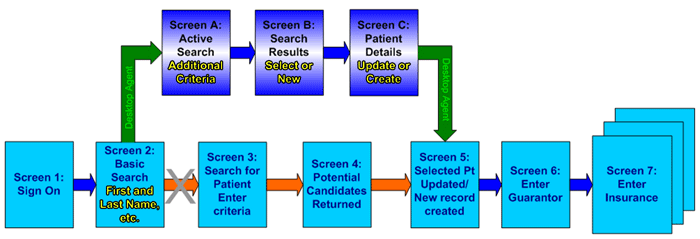Passive
All EMPI implementations start out as a passive implementation, tying into existing integration processes. Any merges take place happen after they were created – sometimes within minutes, hours or days.
HealthIT2 will plan implementations to begin with a data analysis and profiling reports of patient records from the major system sources. Upon completion of the analysis and any data cleansing required, HealthIT2 will perform an Initial Bulk Load of Patient demographic data into the EMPI. This will establish a base population for the index.
After the Initial Bulk Load process has completed, real time bi-directional interfaces will be enabled between the EMPI and Integration Engine / ESB. These interfaces will ensure that the EMPI receives current patient updates from connected systems, and also provides these systems with Enterprise ID (EUID) and Merge information for downstream systems.
Active Registration to EMPI
Initially, EMPIs are installed as a “passive” implementation. That is, various registration systems provide the EMPI demographic information at conclusion of the registration process. Subsequently, depending on each registration system’s unique capabilities, healthcare organizations may choose to implement an “active” configuration. In active implementations, the registration system workflow is modified to communicate directly to the EMPI to check for matching patients, and select and existing patient or create a new patient, before additional data is collected and written to file. The purpose of active integration is to prevent duplicates at the time they are created – during registration. The disrupted workflow first checks for duplicates before allowing them to be submitted.
This process requires the registration system to be able to call the OHMPI Application Program Interface (API) or be able communicate with the EMPI using HL7, IHE or other common healthcare standards. In some cases, we have to use scripting or screen scrape technologies to layer on top of vendor systems, in the event they do not support API calls. Below are workflow scenarios for a typical registration process before and after an Active EMPI implementation.
ADT Registration Workflow: Passive EMPI

ADT Registration Workflow: Active EMPI Implementation

